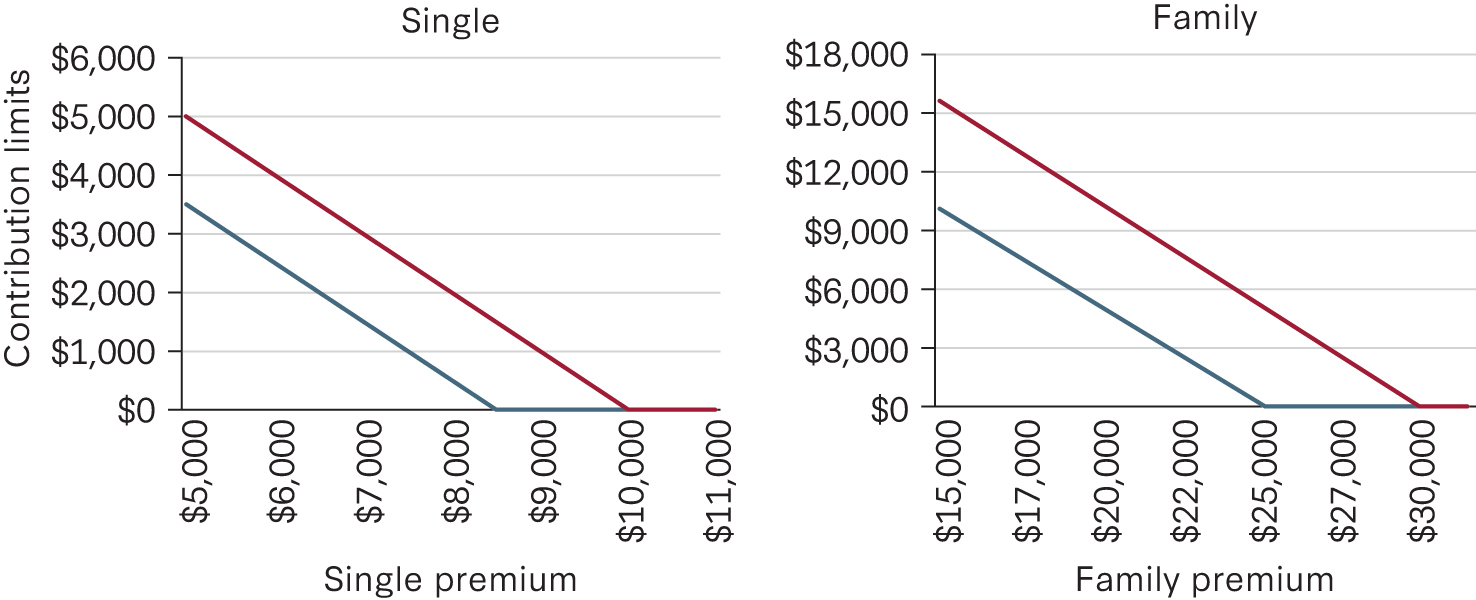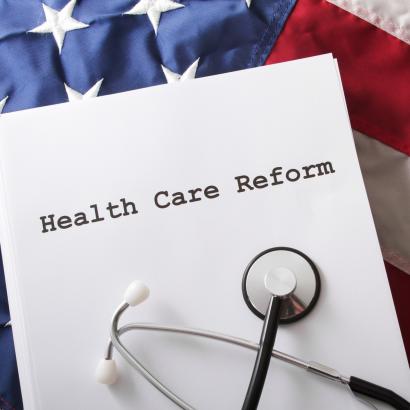Click here to download this proposal.
Individual Health Accounts (IHAs) are newly proposed tax-advantaged savings accounts specifically for healthcare expenses. They would operate similarly to Health Savings Accounts (HSAs), but feature much more flexibility with respect to allowable contributions, insurance plans, and non-healthcare related withdrawals. In addition, they would encourage (but not mandate) the selection of lower premium plans and more price-conscious out-of-pocket spending by making the allowable tax-free contributions a function of a family’s premiums. Lower premiums would mean larger allowable contributions. Higher premium plans would reduce or eliminate the allowable tax-free contribution.
Key Plan Elements
- New tax-advantaged savings accounts for future healthcare needs.
- Available to all individuals with at least catastrophic coverage, from either a private or public plan.
- Annual contribution limits would be set much higher than current HSA limits, but allowable contributions would be reduced by the enrollee’s premiums.
- Contributions would count as above-the-line deductions.
- Withdrawals would count as taxable income unless spending is on qualified medical expenses, but there would be no additional tax penalty for unqualified withdrawals.
Details
Tax-advantaged savings vehicles are broadly available for retirement and education, two predictable lifetime expenses. Families should have a dedicated account set aside for medical care. Healthcare expenses are expected throughout life, but unpredictable in their timing. And yet no universal tax-advantaged health accounts exist.
We propose a new type of savings account that would give consumers more control over their healthcare decisions while removing barriers that discourage people from saving for their future healthcare needs. We call these accounts Individual Health Accounts (IHAs).
Akin to a mix of HSAs and Individual Retirement Accounts, IHAs would offer more flexibility over current options and would be available to any who have at least catastrophic health insurance coverage from either a private or public source. In contrast with existing law governing HSAs, IHA owners would not need to purchase plans that carry a minimum deductible amount. This means that those with chronic conditions could still save pretax dollars for their future healthcare needs. Likewise, those enrolled in ACA plans that are not HDHP-compliant would be able to benefit.
While IHAs would not require a particular type of insurance coverage, the accounts would nevertheless maintain incentives for individuals to select lower-premium, higher-coinsurance plans. This would be accomplished by allowing people with lower premiums to contribute more to their IHAs than those with higher premiums. Specifically, an IHA’s annual contribution limits would be set at a pre-premium threshold amount minus an individual or family’s total premium contributions, inclusive of payments by both the employer and employee. As a result, individuals and families with lower-premium plans would be able to contribute more than individuals and families with higher-premium plans.
A natural target for contribution limits would equal the current median premiums paid for ESI plans. This includes both the employee and employer portions. In 2023, the estimated median premium will be approximately $8,500 for individual coverage and $25,000 for family plans. The figure below shows the maximum contributions people may make to their IHAs at various premiums levels. We consider two contribution levels. The first is set at the median (50th percentile) of premiums paid for current ESI plans. The second is set at the 75th percentile.

The tax treatment of IHAs would be similar to HSAs. Contributions would constitute an above-the-line tax deduction and any investment gains would grow tax free. Balances would be wholly owned by the individual account holder, in the same manner as HSAs are today. And like HSAs, employers would be permitted to contribute to the accounts.
There are some important differences from HSAs. IHA contributions would be subject to payroll taxes—mirroring the tax treatment of retirement savings accounts like IRAs. All else constant, this makes them less attractive than existing HSA contributions, which are exempt from payroll and income taxes. But IHAs would have several advantages over HSAs that would make the trade-off worthwhile for many Americans.
First, nonqualified withdrawals would be treated as ordinary income, but unlike HSAs, there would be no additional penalty. The current 20 percent penalty with HSAs is larger than the total payroll tax rate (a combined 15.3 percent for employer and employee taxes). This means that, while HSAs would offer more up-front tax benefits than IHAs, those tax benefits are only realized if the money goes to qualified healthcare purchases or if the account holder waits until age 65 to withdraw the funds. Over time, the difference in the post-tax value of IHA account balances for unqualified withdrawals would grow relative to HSAs.
The table below compares the post-tax values of IHAs and HSAs for a single individual who contributes the HSA-allowed maximum each year. We assume the individual pays a 22 percent income tax rate every year. For those with no OOP spending, the post-tax value of their IHA would be nearly $4,000 more over 10 years than their HSA. An individual with low OOP spending (set at half the current minimum deductible level for an HDHP plan), would have a post-tax value of $2,000 over ten years. A person with high OOP spending (set at the current minimum deductible) would essentially breakeven between an IHA and HSA.

We estimate that setting the contribution limit at the 50th percentile would reduce 10-year income tax revenue by $82 billion with taxpayers setting aside $30 billion in their IHAs in the first year. Setting the contribution limit at the 75th percentile would reduce revenue by $176 billion and lead taxpayers to set aside $66 billion in the first year. For more information, see our cost estimates.
















